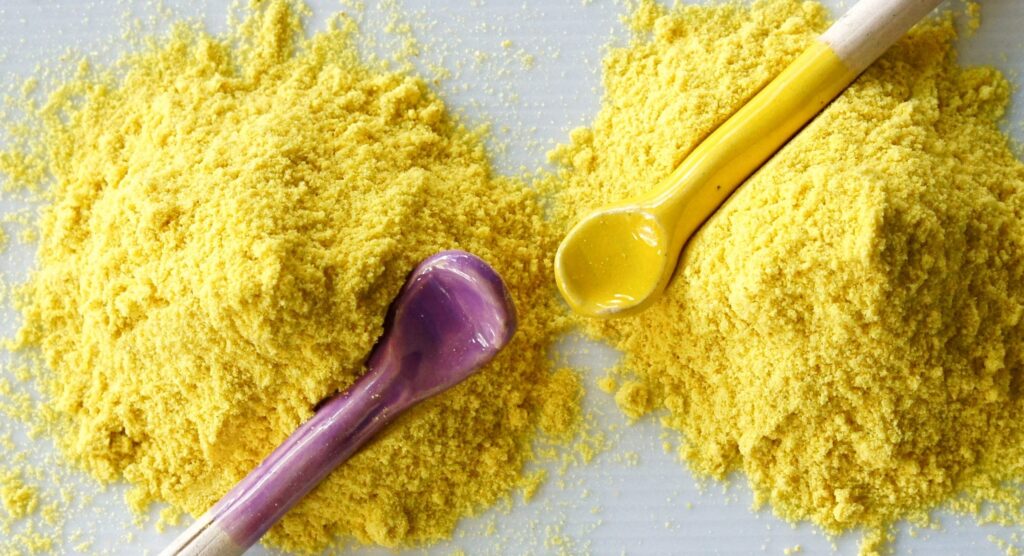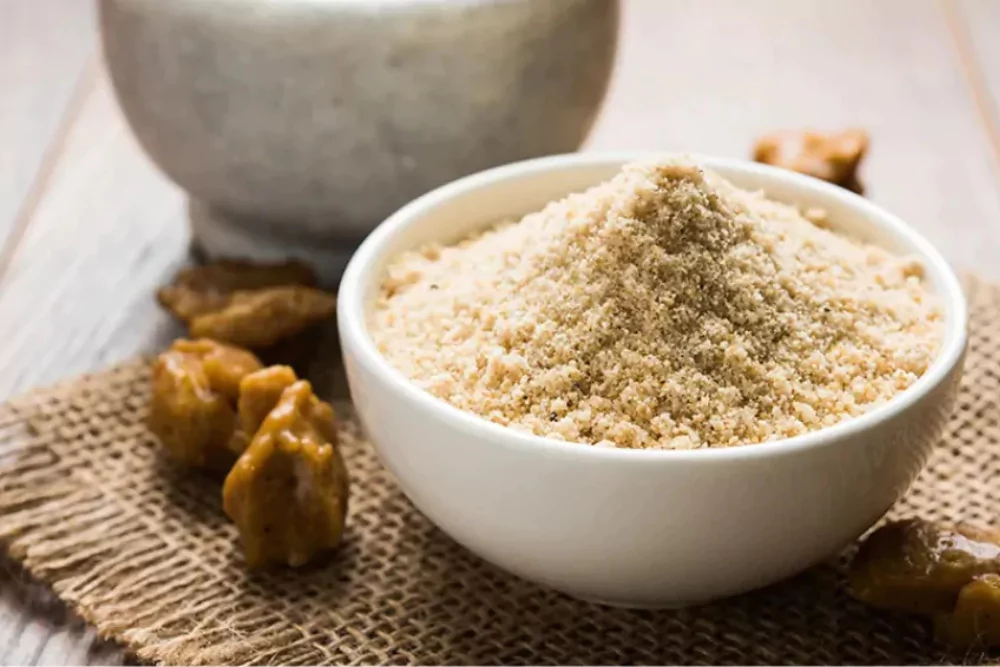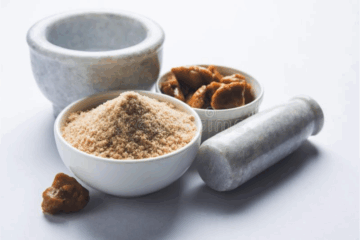What are the benefits of making asafoetida at home?
Summary: Making asafoetida at home ensures its purity, freshness, and allows customization to suit your taste and health preferences.
Detailed Answer:
- Purity: Homemade asafoetida is free from additives, preservatives, and artificial colors, ensuring you get a pure and natural product. Unlike store-bought versions, which may contain fillers or contaminants, homemade hing gives you full control over the ingredients.
- Freshness: Preparing hing powder at home guarantees its freshness, enhancing its flavor and aroma in your dishes. Freshly ground asafoetida has a more potent fragrance and taste, making it a superior addition to your cooking.
- Customization: You can customize the potency and blend of your asafoetida to suit your taste and dietary needs. For instance, if you prefer a stronger flavor, you can adjust the ratio of asafoetida resin to flour accordingly.
- Cost-Effective: Making asafoetida at home can be more economical in the long run, as you can buy the raw materials in bulk. This reduces the cost per gram compared to purchasing pre-made hing powder.
- Health Benefits: Homemade hing powder retains more of its natural medicinal properties, promoting better digestion and overall health. Asafoetida is known for its anti-inflammatory and anti-flatulent properties, making it a valuable addition to your diet.
What ingredients do I need to make hing powder at home?
Summary: To make hing powder at home, you will need raw asafoetida resin, wheat flour or rice flour, and turmeric powder.
Detailed Answer:
- Raw Asafoetida Resin: This is the primary ingredient, which can be purchased from specialty spice stores or online. Ensure you get good quality resin for the best results. The resin is often available in small chunks or blocks, which need to be ground into a fine powder.
- Wheat Flour or Rice Flour: This acts as a filler to dilute the strong flavor of raw asafoetida. Wheat flour is commonly used, but rice flour can be used as a gluten-free alternative. The flour also helps in achieving a smooth, fine texture in the final product.
- Turmeric Powder: Turmeric is added for its color and additional health benefits. It also helps in blending the ingredients smoothly. Turmeric is known for its anti-inflammatory and antioxidant properties, adding more health benefits to your hing powder.
- Optional Ingredients: Some recipes include dried ginger powder or fenugreek seeds for added flavor and health benefits. These ingredients can enhance the overall taste and medicinal properties of your homemade asafoetida.
How do I store homemade asafoetida to keep it fresh?
Summary: Store homemade asafoetida in an airtight container, away from direct sunlight and moisture, to keep it fresh for a long time.
Detailed Answer:
- Airtight Container: Use a tightly sealed container to prevent exposure to air, which can degrade the quality of asafoetida over time. Glass jars with tight-fitting lids or high-quality plastic containers are ideal for storage.
- Cool, Dry Place: Store the container in a cool and dry place, away from direct sunlight and humidity. A pantry or kitchen cabinet is ideal. Exposure to heat and moisture can cause the powder to clump and lose its potency.
- Small Batches: Make asafoetida in small batches to ensure you always have a fresh supply. This also prevents wastage if the spice loses its potency over time. It’s better to make small quantities that can be used up within a few months.
- Labeling: Label the container with the date of preparation to keep track of its freshness and use it within six months for the best flavor. Over time, the aromatic compounds in asafoetida can degrade, reducing its effectiveness and taste.
Are there any special tips or techniques for making high-quality hing powder?
Summary: Use fresh ingredients, maintain the right proportions, and grind the mixture thoroughly to achieve high-quality hing powder.
Detailed Answer:
- Quality Ingredients: Always use high-quality, fresh ingredients to ensure the best flavor and potency in your hing powder. The quality of the asafoetida resin, in particular, will have a significant impact on the final product.
- Right Proportions: Maintain the correct ratio of asafoetida resin to flour and turmeric. A common proportion is 1 part asafoetida resin, 2 parts flour, and a pinch of turmeric. Adjust these proportions based on your preference for potency and flavor.
- Grinding: Grind the mixture thoroughly to achieve a fine, uniform powder. Use a mortar and pestle or a spice grinder for best results. Ensure that there are no lumps or coarse particles in the final product.
- Dry Roasting: Dry roast the asafoetida resin before grinding to enhance its flavor and aroma. Roast it on low heat until it becomes fragrant. This process helps to bring out the essential oils and aromatic compounds in the resin.
- Blending: Blend the roasted asafoetida with flour and turmeric thoroughly to ensure even distribution of flavors. Take your time to mix the ingredients well, so that every pinch of the powder has a consistent taste and potency.
How can I use homemade asafoetida in my cooking?
Summary: Homemade asafoetida can be used in various dishes like dals, curries, and pickles to enhance flavor and aid digestion.
Detailed Answer:
- Dals and Lentils: Add a pinch of asafoetida while tempering dals and lentils to enhance their flavor and improve digestion. Asafoetida helps to reduce the formation of gas and bloating, making dals more digestible.
- Curries: Use asafoetida in curries, especially those with legumes and beans, to reduce gas and bloating. Asafoetida’s strong aroma blends well with spices like cumin, coriander, and turmeric, adding depth to the flavor profile of your curry.
- Pickles: Asafoetida is a common ingredient in Indian pickles, where it adds a unique flavor and helps preserve the pickle. Its antimicrobial properties help in prolonging the shelf life of homemade pickles.
- Sauces and Chutneys: Incorporate asafoetida into sauces and chutneys for a distinctive taste and digestive benefits. It can be added to tomato-based sauces, tamarind chutneys, and other condiments to enhance their flavor.
- Vegetable Stir-Fries: Add asafoetida to vegetable stir-fries to enhance their flavor profile and make them easier to digest.
Conclusion
Making asafoetida at home is a rewarding and beneficial practice. It ensures you have a pure, fresh, and customizable spice that enhances the flavor and aroma of your dishes while offering numerous health benefits. From selecting quality ingredients to storing it properly, every step of the process can be tailored to meet your preferences. Embrace the art of making asafoetida at home and enjoy the culinary and health advantages it brings to your kitchen. With Hingwala’s guidance, you can create high-quality hing powder that elevates your cooking and supports your well-being.





